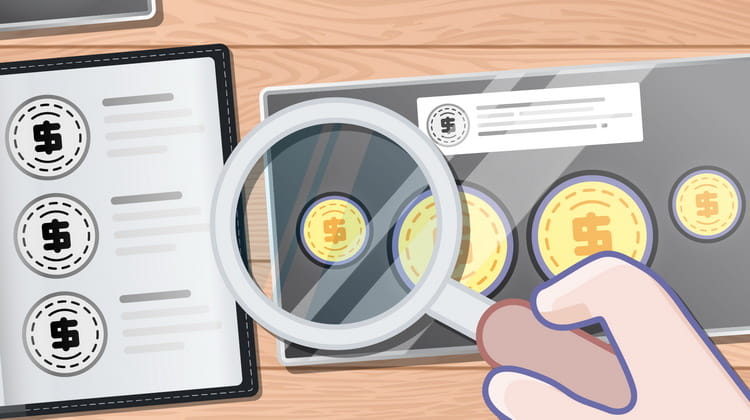
Coins in slabs are a guarantee of the authenticity of collection items. The copy is identified by the expert, gets an assessment by the Sheldon scale and is placed in a special plastic container. The capsules are supplied with a certificate with detailed information (nominal, country, year of minting, quality, and individual number). The slab is sealed so that it is impossible to open it without damage. This method provides additional protection for coins from the environmental influences.
History
In 1948, collector William Sheldon came up with a system for assessing the condition of coins. He worked as a psychologist, and numismatics was his hobby. In his collections, there were American copper coins with a face value of one cent. In 1949, he systematized them by quality – the highest rating was the number 70, and the lowest one was 1. Soon, a convenient table for collectible and bullion coins appeared. Based on the numbers, you can determine the value of a coin, rather than relying on the evaluation of unscrupulous dealers.
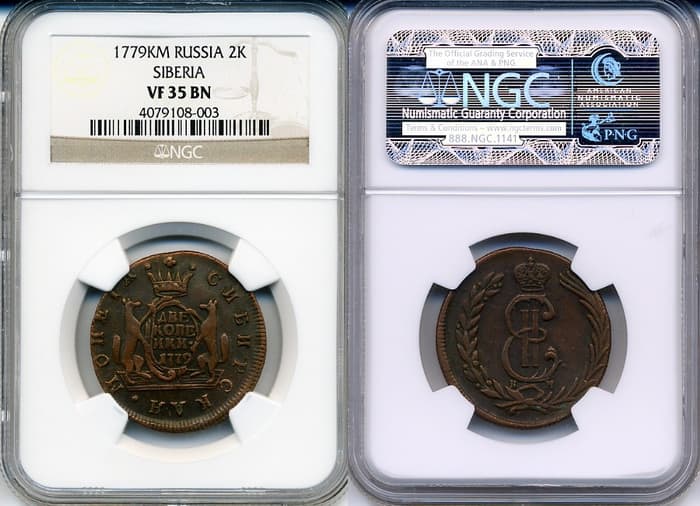
Sheldon scale consists of three points – condition, grade and description:
- MS – 60-70 – Mint State (Uncirculated);
- AU – 50, 53, 55, 58 – About Uncirculated;
- XF – 40, 45 – Extremely Fine;
- VF – 20, 25, 30, 35 – Very Fine;
- F – 12,15 – Fine;
- VG – 8, 10 – Very Good;
- G – 4, 6 – Good;
- AG – 3 – About Good;
- FA – 2 – Fair;
- PR – 1 – Poor.
For the Proof quality coins, the Uncirculated scale is used. The evaluation of MS60, MS65 and higher, depending on the condition, can be seen on bullion copies.
Do you know? Not all the coins need certification. Some of them are not worth the time and money required to test the items at a low cost. For instance, if the price is from $ 15 to $ 100, certification will be unnecessary and undesirable. It is enough to talk a reliable dealer in order to determine whether the costs are financially justified.
Before the appearance of the Sheldon scale, buying and selling gold and silver coins was a difficult and sometimes unprofitable process. Dealers could estimate the cost of the same sample in different ways. The final numbers were not always beneficial for the collector. Therefore, the grading system instantly became popular and quickly spread around the world, becoming a “universal language” for numismatists.

Later the “slabbing” has appeared. It is a system of evaluation and systematization of collectible coins. The first organizations (NGC, PCGS, and ANACS) were being opened all over the world – grading companies offering expert evaluation, certification, and anti-counterfeiting services. In Russia, these services are provided by the National Numismatic Register. Not only gold and silver coins but also samples of copper, nickel, tin, and banknotes can be put in slabs. In hermetically sealed containers, collectible items are protected from counterfeiting, oxidation, and mechanical damage.
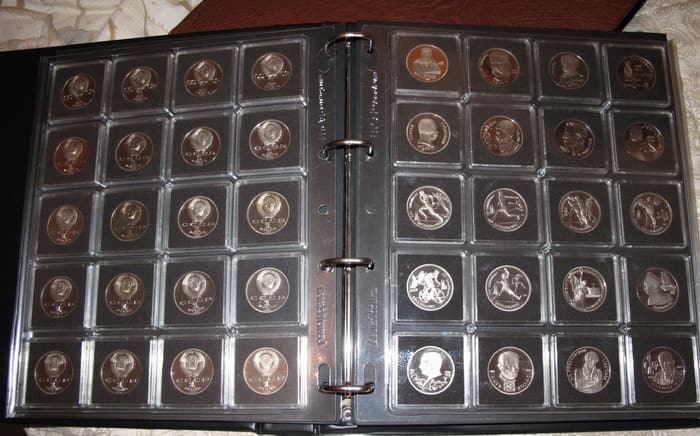
Advantages of coins validation and slabs
Slabbing of coins is a beneficial process for those who would like to build a business on numismatics buying and selling collectible and bullion copies. Thanks to the available information on the Web, you can easily protect yourself from unprofitable purchases and frauds when evaluating coins online and selling via international auctions. The websites of grading companies provide useful information for those who are going to buy coins in the slab. Every day the data about new copies that passed the certification and the current summary of prices for all types of coins in the world appear.
Do you know? Before the appearance of the Sheldon scale, there were two ways of coins evaluation. In the 19th century, the price was determined subjectively – the cost was affected by the degree of damage, shine, and appeal. Later, the coins began to be attributed to one of 4 categories: bad (worn out, with outlines, but without details), good (strong abrasion, but details are present), very good (many details, but there is some abrasion) and new ones (no abrasion and all details are present).
Numismatists liked the system of certification and slabbing because of the following advantages:
- thorough verification for authenticity;
- expert evaluation of the condition;
- improved storage conditions;
- holographic protection and individual number;
- elimination of the possibility of counterfeiting.

Slabbing services are constantly expanding. Since recently the container could be sealed not just with a single copy, but with a collection, like the coins of Petrov’s collection in the NGC slab. Each container has its own unique number, which can be used at any time to find coins in the register of the grading company and determine its authenticity.
In the 1990s, the counterfeiters who counterfeit slabs appeared. However, the business quickly died down, as the original and counterfeit could be easily distinguished according to the information on the website of the certification company. Later, fake grading organizations appeared. The only way to protect yourself from them is to carefully check all the information and consult with those who have used the services about buying coins in the slabs from a particular company.
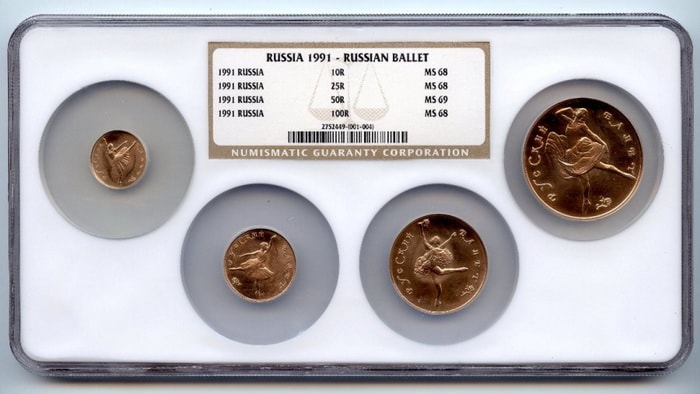
The slabbing process
A total of about 200 companies provide slab services. The most reliable are NGC and ANACS in the USA, PCGS in France, the National Numismatic Register in Russia. The specialists accept coins from authorized dealers. Anyone can get this position if he or she fills out the appropriate form. The members of the Collectors Society can also send coins. The service is chargeable – the basic price for an independent evaluation and certification will cost between $ 15 and $ 25. There are some additional services and they have their own prices.
Then the process goes according to the following scheme:
- registration of a parcel from the authorized dealers of the company;
- adding a coin to an electronic registration system (thanks to this information you can track the process);
- taking photos of an item;
- detailed study by 2-3 professionals with big experience and knowledge in a particular field;
- production of an individual certificate;
- hermetic sealing of coins into the slab.
It should be noted that not all types of coins are subject to validation. Some items have defects or severe damage, so they are assigned the status of “detailed grading” and sent back to the client. The same happens if the experts have recognized the sample as a counterfeit (additional services include spectral analysis of coins).
Do you know? Currently, there are ten categories of coins that cannot be identified and attested. If the coin falls into one of them, it will be returned: doubtful tone/color, degree of cleaning, mechanical damage, scratches, change of a surface (solder, re-engraving), damaged edge, defects caused by nature (corrosion, porosity), counterfeit or reproduction, the presence of polyvinyl chloride, severe damage.
In order not to store each coin separately, NGC and PCGS provide their customers with convenient tablets – boxes for slabs of size L by 8 and 9 cells.
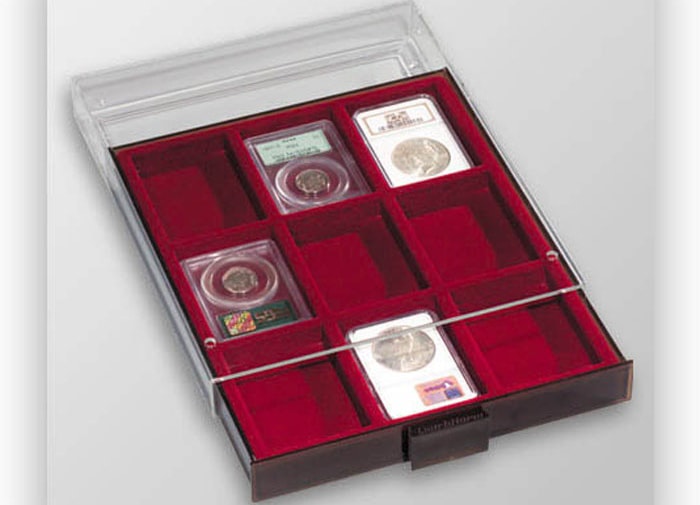
Comments
No commens yet.